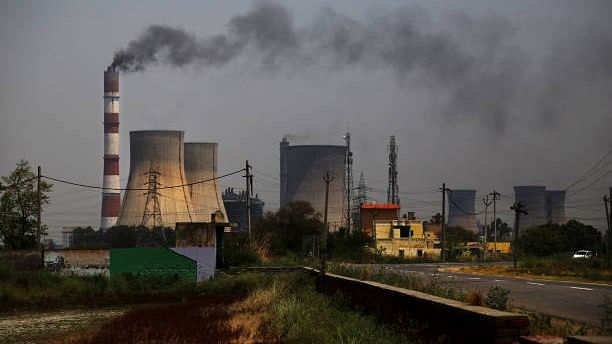
Thermal power plants. (Image for representation)
Credit: iStock Photo
Mumbai: The Centre for Research on Energy and Clean Air (CREA) revealed the urgent need for accelerated Flue Gas Desulfurization (FGD) installations in India’s coal-fired thermal power plants to combat the nation’s soaring SO2 emissions.
If implemented fully, FGD systems could reduce India’s annual SO2 emissions by an estimated 64 per cent — from 4,327 kilotonnes to approximately 1,547 kilotonnes — significantly benefiting both air quality and public health, as thermal power plants in India emit over 240 times the 17.8 kilotonnes released from burning 8.9 million tonnes of paddy straw.
As the world’s largest SO2 emitter, India’s reliance on coal is taking a toll on air quality and public health.
However, it does not have to be this way. Implementing the emission standards introduced by the Ministry of Environment, Forests, and Climate Change (MoEFCC) in 2015 could reduce SO2 emissions by 64 per cent across the country. Yet, with only 8 per cent of India’s thermal power plants adopting these standards nearly a decade later, and with ongoing proposals from the power sector to delay further implementation, India risks significant financial and health costs to the public and the nation.
According to CREA estimates, 4,327 kilotonnes of SO2 were released by thermal power plants from the period of June 2022 to May 2023, with the state, central, and private sectors contributing 1,563 kilotonnes (36 per cent), 1,426 kilotonnes (33 per cent), and 1,339 kilotonnes (31 per cent) respectively.
Adopting FGD technology would reduce emissions to 500 kilotonnes, 420 kilotonnes, and 627 kilotonnes in the state, central, and private sectors, representing reductions of 65 per cent, 69 per cent, and 60 per cent respectively. These achievements underscore the effectiveness of FGD technology; however, with only 8 per cent of thermal power plant capacity in India having completed FGD installations, the pace of adoption remains insufficient.
“These figures show the necessity of FGD technology, but without firm timelines and enforcement, we’re only scratching the surface of what’s possible for cleaner air in India,” Manoj Kumar, Analyst, CREA, said in a press statement.
The CREA brief also demonstrates the potential impact of FGD technology in high-emission states. In Maharashtra, SO2 emissions could decrease by 71 per cent, from 542 kilotonnes to 158 kilotonnes. Chhattisgarh has the potential to cut its emissions by 68 per cent, from 509 kilotonnes to 165 kilotonnes.
Similarly, Madhya Pradesh could achieve a 67 per cent reduction, bringing emissions down from 470 kilotonnes to 156 kilotonnes, and Uttar Pradesh could see a reduction of 58 per cent, lowering emissions from 447 kilotonnes to 187 kilotonnes. These projections illustrate the substantial air quality improvements that FGD installations could bring to some of India’s most affected regions.